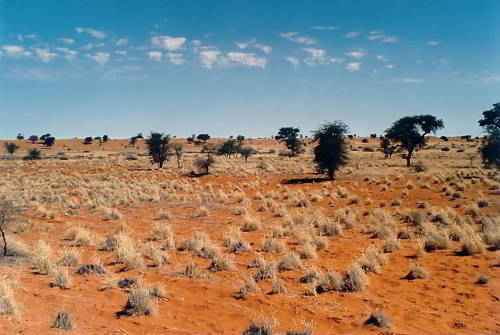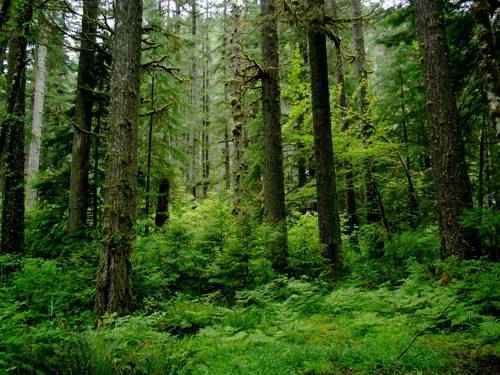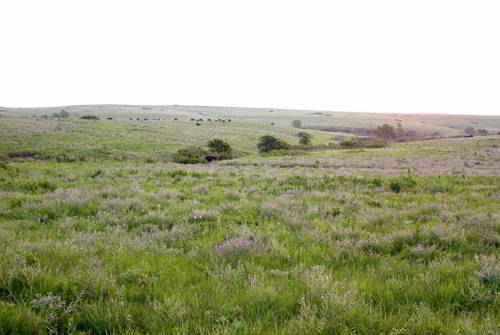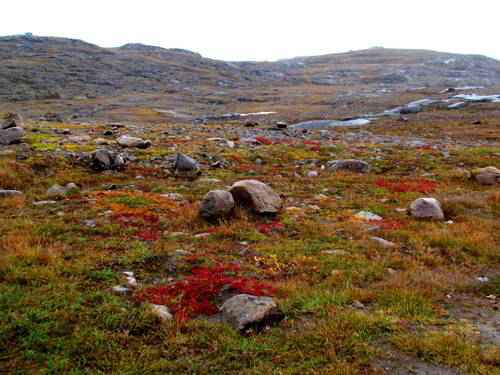The main biomes of the planet
Biomes are large regions of the planet that are divided according to characteristics such as geographical location, climate, soils, rainfall, flora and fauna. Biomes are sometimes called or ecological regions.
Climate is perhaps the most important factor that determines the nature of any biome, but there are other factors that determine the identity of biomes - topography, geography, humidity, precipitation, etc.
Scientists disagree on the exact number of biomes that exist on Earth. Many different classification schemes have been developed to describe the planet's biomes. For example, on our site we have taken five main biomes: aquatic biome, desert biome, forest biome, grassland biome and tundra biome. Within each kind of biome, we also describe many different types of habitats.
Aquatic biomes include water-dominated habitats around the world, from tropical reefs, mangroves to arctic lakes. Aquatic biomes are divided into two main groups: marine and freshwater habitats.
Freshwater habitats include bodies of water with low salt concentrations (below one percent). Freshwater bodies include lakes, rivers, streams, ponds, wetlands, lagoons, and swamps.
Marine habitats are bodies of water with a high concentration of salts (more than one percent). Marine habitats include seas, coral reefs and oceans. There are also habitats where fresh and salt waters mix. In these places, you will find mangroves, salt and mud marshes.
The various aquatic habitats of the world support a wide range of wildlife, including virtually every animal group: fish, amphibians, mammals, reptiles, invertebrates, and birds.

Includes terrestrial habitats that receive very little precipitation throughout the year. The desert biome covers about one-fifth of the Earth's surface. Depending on aridity, climate and location, it is divided into four groups: arid deserts, semi-arid deserts, coastal deserts and cold deserts.
Arid deserts are hot, dry deserts that are located at low latitudes around the world. Temperatures are high throughout the year and rainfall is very low. Arid deserts are found in North America, Central America, South America, Africa, South Asia, and Australia.
Semi-arid deserts are generally not as hot and dry as arid ones. They have long dry summers and relatively cool winters with little rainfall. Semi-arid deserts are found in North America, Newfoundland, Greenland, Europe and Asia.
Coastal deserts are typically located on the western edges of continents about 23° north and south of the equator. They are also known as the Tropic of Cancer (the parallel north of the equator) and the Tropic of Capricorn (the parallel south of the equator). In these places, cold ocean currents form heavy fogs that drift over the deserts. Although the humidity of coastal deserts can be high, rainfall is low. Examples of coastal deserts include the Atacama Desert in Chile and the Namib Desert in Namibia.
Cold deserts are regions of the earth's surface that have low temperatures and long winters. Cold deserts are found in the Arctic and Antarctic. Many areas of the tundra biome can also be classified as cold deserts. Cold deserts generally receive more precipitation than other types of desert.

Includes extensive habitats dominated by trees. Forests cover an area equal to about one-third of the Earth's land mass and are found in many regions around the world. There are three main types of forests: temperate, tropical and taiga (boreal). Each type of forest has its own climatic characteristics, species composition and wildlife features.
Temperate forests are found in the temperate latitudes of the world, including North America, Asia, and Europe. Temperate forests experience four well-defined seasons of the year. The growing season in temperate forests lasts about 140-200 days. Precipitation is regular and falls throughout the year, and the soils are rich in nutrients.
Tropical forests grow in the equatorial regions between 23.5° north latitude and 23.5° south latitude. Rainforests have two seasons: the rainy season and the dry season. The length of the day practically does not change throughout the year. Rainforest soils are more acidic and less nutrient rich.
Taiga forests, also known as boreal forests, are the largest terrestrial habitat. Taiga is a strip of coniferous forests that surround the globe in high northern latitudes from about 50° to 70° north latitude. The taiga forests form a circumpolar habitat that runs through Canada and extends from northern Europe all the way to eastern Russia. Taiga forests border the tundra biome to the north and temperate forests to the south.

Includes habitats where grasses are the dominant vegetation and few trees and shrubs are present. There are three main grassland types: temperate grasslands, tropical grasslands (also known as savannas), and steppe grasslands. Grasslands have dry and rainy seasons. During the dry season, grasslands are prone to fires.
In temperate grasslands, grasses predominate, and trees and large shrubs are absent. The soil of temperate grasslands has a nutrient-rich topsoil. Seasonal droughts are often accompanied by fires that prevent the growth of trees and shrubs.
Tropical grasslands are grasslands located near the equator. They have a warmer and more humid climate than the meadows of temperate latitudes. Tropical grasslands are dominated by grasses, but trees are also found in places. Tropical grassland soils are very porous and dry out quickly. Tropical grasslands are found in Africa, India, Australia, Nepal and South America.
Steppe grasslands are dry grasslands that border semi-arid deserts. Grasses growing in steppe meadows are much shorter than those of temperate and tropical grasslands. Trees are found here only along the banks of lakes, rivers and streams.

Cold habitat characterized by: permafrost soils, low air temperatures, long winters, low vegetation and a short growing season.
The Arctic tundra is located near the North Pole and extends south to the border where coniferous forests grow.
The Antarctic tundra is located in the Earth's Southern Hemisphere on remote islands off the coast of Antarctica such as the South Shetland and South Orkney Islands, as well as on the Antarctic Peninsula.
The Arctic and Antarctic tundra supports about 1,700 plant species, including mosses, lichens, sedges, shrubs, and grasses.
Alpine tundras are found in mountains all over the world at altitudes that are above the tree line. Alpine tundra soils are different from soils in the polar regions, where they tend to be well-drained. The flora of the mountain tundra is represented mainly by herbs, small shrubs and dwarf trees.
If you find an error, please highlight a piece of text and click Ctrl+Enter.







